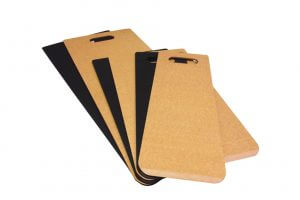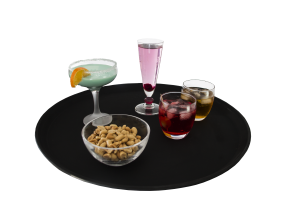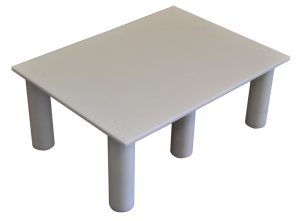Wooden blocks are particularly useful tools in professional kitchens, butcher shops, and delis for cutting and processing different types of food, especially meat and cold cuts. Being professional tools, they often undergo particularly intense use, so it’s important to provide the proper maintenance: this preserves the quality of the block over time.
Euroceppi has a wide range of cube blocks and double-face blocks with stools, very practical and versatile, blocks with fixed legs, and, if there are special needs, it is possible to request custom blocks of any size or shape, even according to your aesthetic taste.
Wood: Preliminary Advice for Effective Yield
Before delving into the details of the maintenance procedure for wooden blocks, we need to take a step back to learn small but essential tricks that ensure the wood’s preservation and optimal yield over time. Wood is a natural element, so it is defined as “alive”; in fact, to maintain its properties over time, it must always be kept at a proper distance from water. This means that wood should never be washed with water, or dampened, and especially not stored in humid environments, because it would risk getting ruined and deformed. Our advice is to categorically avoid contact with sources of moisture such as refrigerators, but also with sources of heat such as ovens and stoves. By doing so, the wooden block can only benefit.
Maintaining Wooden Blocks
Once the essential practices of wood preservation and its irreducible intolerance to water are learned, we can dedicate ourselves to the actual maintenance of wooden blocks, an ad hoc procedure composed of precise rules that must be followed with a certain rigor if we want to ensure optimal preservation over time.
For proper hygiene and maintenance of the wooden block, it is important to:
- Clean it daily after each use or food contact with a paper towel.
- Scrape its surface with a specific scraper to remove scratches and signs of wear, which will reduce the bacterial load, or with a brush with steel teeth. Alternatively, if we really don’t have these tools (which we nevertheless recommend), it’s possible to use a knife blade.
- For complete and natural disinfection, clean the wooden block with a damp cloth and cover it with coarse salt overnight, so it absorbs any moisture residue. In this way, the wood will maintain its usual robustness.
- Finally, it’s recommended to rotate the block to achieve uniform wear on both “faces.”
It’s clear that the time dedicated to maintenance and any planning of the wooden blocks will be proportional to their intensity of use and, therefore, the importance of the cuts presents on the work surface.
With this in mind, if the block shows signs of excessively visible wear, planning or replacement is recommended to avoid any splinters contaminating the food.
Euroceppi can help you preserve the quality of your wooden blocks with a planning service at our location to completely regenerate the block.
Contact us to learn more.



